

Although it may seem that people suffer from an endless number of emotional problems and challenges, Laurence Heller and Aline LaPierre maintain that most of these can be traced to five biologically based organizing principles: the need for connection, attunement, trust, autonomy, and love-sexuality. They describe how early trauma impairs the capacity for connection to self and others and how the ensuing diminished aliveness is the hidden dimension that underlies most psychological and many physiological problems. Heller and LaPierre introduce the NeuroAffective Relational Model® (NARM), a method that integrates bottom-up and top-down approaches to regulate the nervous system and resolve distortions of identity such as low self-esteem, shame, and chronic self-judgment that are the outcome of developmental and relational trauma. While not ignoring a person’s past, NARM emphasizes working in the present moment to focus on clients’ strengths, resources, and resiliency in order to integrate the experience of connection that sustains our physiology, psychology, and capacity for relationship.
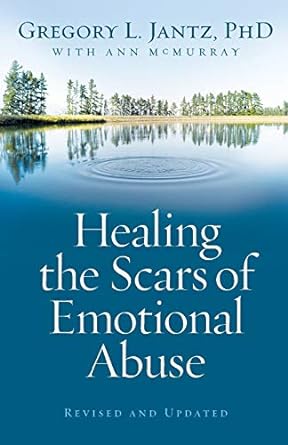

In spite of their physical invisibility, emotional wounds are a very damaging form of abuse. Whether caused by words, actions, or even indifference, emotional abuse is common–yet often overlooked. In this helpful guide, Dr. Gregory L. Jantz reveals how those who have been abused by a spouse, parent, employer, or minister can overcome the past and rebuild their self-image
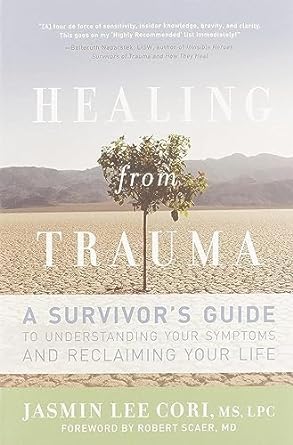

While there are many different approaches to healing trauma, few offer a wide range of perspectives and options. With innovative insight into trauma-related difficulties, Jasmin Lee Cori helps you: Understand trauma and its devastating impacts Identify symptoms of trauma (dissociation, numbing, etc.) and common mental health problems that stem from trauma Manage traumatic reactions and memories Create a more balanced life that supports your recovery Choose appropriate interventions (therapies, self-help groups, medications and alternatives) Recognize how far you’ve come in your healing and what you need to keep growing Complete with exercises, healing stories, points to remember, and resources, this is a perfect companion for anyone seeking to reclaim their life from the devastating impacts of trauma.
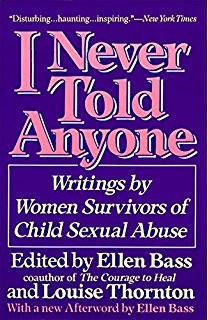

I Never Told Anyone: Writings by Women Survivors of Child Sex Abuse is a 1983 book edited by Ellen Bass and Louise Thornton and marked Bass’s first published non-fiction work. It was published by Harper and Row and contains a collection of numerous child sexual abuse testimonials from a wide range of original source material including book excerpts, poems, and essays. The work was republished in 1991 through Harper Perennial and included a new afterword by Bass. The book’s title is a reference to some abuse survivors stating that they had never told anyone about their abuse due to various reasons such as threats of harm or that they did not think that they would be believed.


Intimate Partner Violence is a serious social problem affecting millions in the United States and worldwide. The image of violence enacted by a male aggressor to a female victim dominates public perceptions of intimate partner violence (IPV). This volume examines how this heteronormativity influences reporting and responding to partner violence when those involved do not fit the stereotype of a typical victim of IPV. Research and theory have helped us to understand power dynamics about heterosexual IPV; this book encourages greater attention to the unique issues and power dynamics of IPV in sexual minority populations. Divided into five distinct sections, chapters address research and theories associated with IPV, examining the similarities and differences of IPV within heterosexual and gender minority relationships.
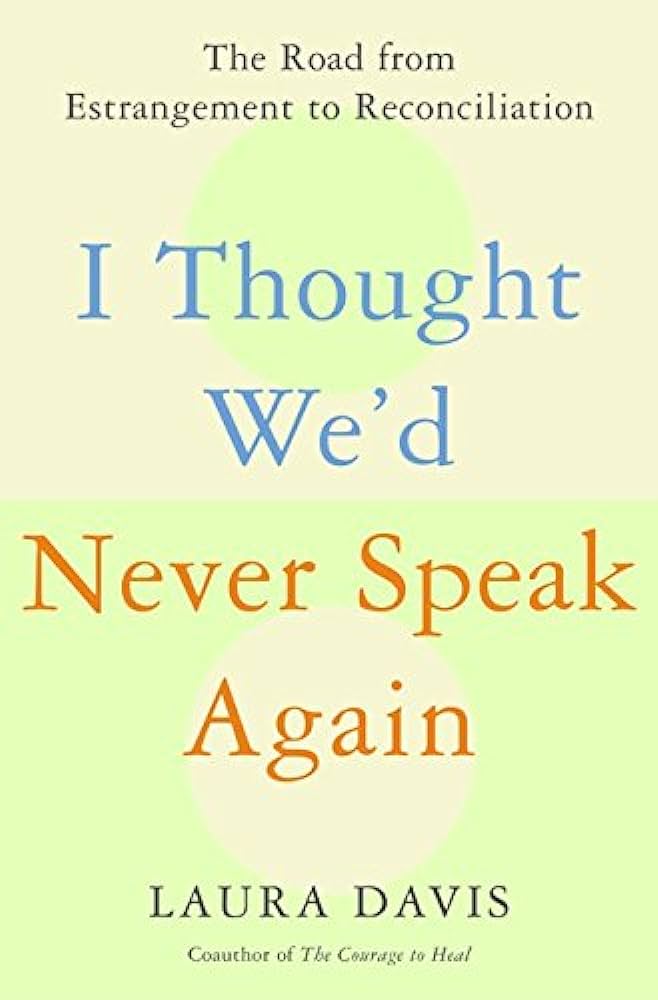

In her bestselling classic The Courage to Heal, Laura Davis helped millions heal from the pain of child sexual abuse. Now, in I Thought We’d Never Speak Again, she tackles another critical, emerging issue: reconciling relationships that have been damaged by betrayal, anger, and misunderstanding. With clarity and compassion, Davis maps the reconciliation process through gripping first-person stories of people who have mended relationships in a wide variety of circumstances. In these pages, parents reconcile with children, embittered siblings reconnect, angry friends reunite, and war veterans and crime victims meet with their enemies. Davis weaves these powerful accounts with her own experiences reconciling with her mother after a long, painful estrangement. Making a crucial distinction between reconciliation and forgiveness, Davis explains how people can make peace in relationships without necessarily forgiving past hurts. In addition to a special section called “Ideas for Reflection and Discussion,” she includes a self-assessment quiz, “Are You Ready for Reconciliation?” Whether you want to reconcile a relationship that has ended, improve a relationship that is difficult or distant, or learn the skills you need for dealing with the inevitable conflicts we all face in life, this book will teach you to mend troubled relationships and find peace.


In questo libro, Van der Kolk amplia radicalmente lo spettro delle cause e delle conseguenze del trauma, dando speranza e fornendo spiegazioni chiare a chiunque ne sia colpito. Sulla base di trent’anni di esperienza e pratica clinica, evidenzia che il terrore e l’isolamento, aspetti centrali del trauma, rimodellano radicalmente sia il corpo sia il cervello.
Le nuove conoscenze sull’istinto di sopravvivenza spiegano perché le persone traumatizzate sperimentino un’ansia e una rabbia intollerabili, e permettono di capire l’impatto del trauma sulla capacità di concentrazione e di memorizzazione, e sulla possibilità di instaurare relazioni basate sulla fiducia, sentendosi “a casa” nel proprio corpo. Integrando i recenti progressi delle neuroscienze e degli studi sull’attaccamento, l’autore indica nuovi percorsi di ricerca, che consentono di ricablare il funzionamento cerebrale, contrastando il senso di impotenza e invisibilità associato al trauma e facendo sì che adulti e bambini possano recuperare la padronanza del proprio corpo e della propria vita.


Questo libro affronta il tema dei lutti reali, non simbolici. Quindi, del lutto inteso come esperienza soggettiva della perdita per la morte di una persona alla quale si è profondamente legati. È nel lutto che sembra trovarsi la più piena conferma di quella dimensione relazionale che fonda la natura umana. È il lutto a sottolineare da un lato quanto l’esistenza umana sia intersoggettiva, dall’altro a mettere in luce quanto – una volta formatisi – i legami davvero significativi e importanti della nostra vita possano in fondo solo trasformarsi, ma mai finire nel nulla. Nemmeno con la morte. In queste pagine gli studenti di psicologia, gli psichiatri e gli psicoterapeuti, ma anche gli infermieri, gli assistenti sociali, gli insegnanti, i ricercatori che operano nel campo della psicotraumatologia e della psicologia clinica più in generale, troveranno un manuale di consultazione e, soprattutto, uno strumento di riflessione e di intervento clinico sul tema del lutto, inclusi scale di valutazione, criteri diagnostici, protocolli di intervento.
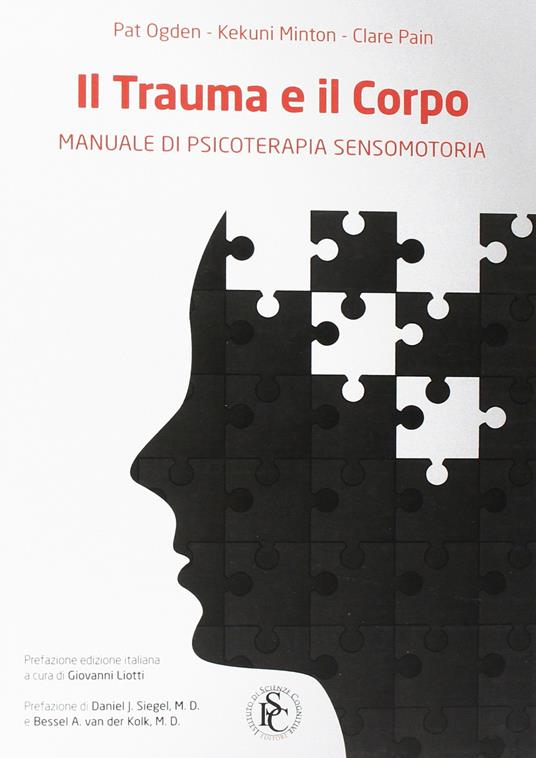

Come guarire le ferite di un trauma? Quest’opera, fondamentale per i terapeuti e i medici, spiega in modo chiaro il complesso processo che segue l’esperienza traumatica. Unendo teorie e tecniche della psicoterapia orientata sul corpo, gli autori spiegano come l’uso della sensibilità corporea e del movimento possa aiutare a guarire i segni lasciati da un trauma. Una prima parte è dedicata alla teoria in cui si spiega il modo in cui l’esperienza traumatica sconvolge il corpo da un punto di vista fisiologico ed emotivo; la seconda parte si focalizza sulle istruzioni relative al trattamento con casi utili che illustrano i vari passaggi. Un manuale che segna una svolta nel campo della terapia per il trattamento del trauma.
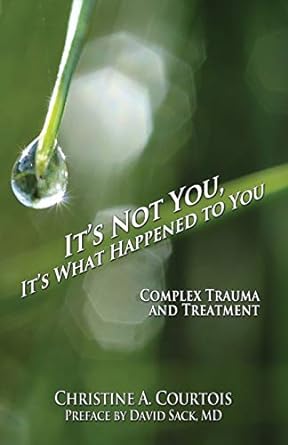

With It’s Not You, It’s What Happened to You: Complex Trauma and Treatment, Dr. Christine Courtois has simplified her extensive and, until now, quite scholarly work geared toward understanding and developing the concept of “complex trauma,” and the assessment and treatment thereof. Dr. Courtois provides here an abbreviated and easy-to-read explanation of what complex trauma is, how it develops, the ways in which it manifests, and how it can effectively be dealt with. The book opens with an explanation of trauma in general-providing historical perspective, examining the various types of traumatic experience, and looking in-depth at the chronic, repetitive, and layered forms of trauma that often build upon and reinforce one another to create complex trauma. Next Dr. Courtois discusses trauma-driven emotional turmoil, and trauma’s effects on memory, self-image, relationships, and even physical well-being. She then provides readers with a basic understanding of the ways in which complex trauma is diagnosed and assessed, with an explanation of all common trauma-related diagnoses-including stress disorders (such as PTSD), dissociative reactions and disorders, and frequently co-occurring issues (addictions, self-injury, sleep disorders, etc.) In the book’s final section, Dr. Courtois presents rudimentary information about the ways in which complex trauma and related issues can effectively be treated, including brief explanations of all therapeutic approaches and methods that might be used.
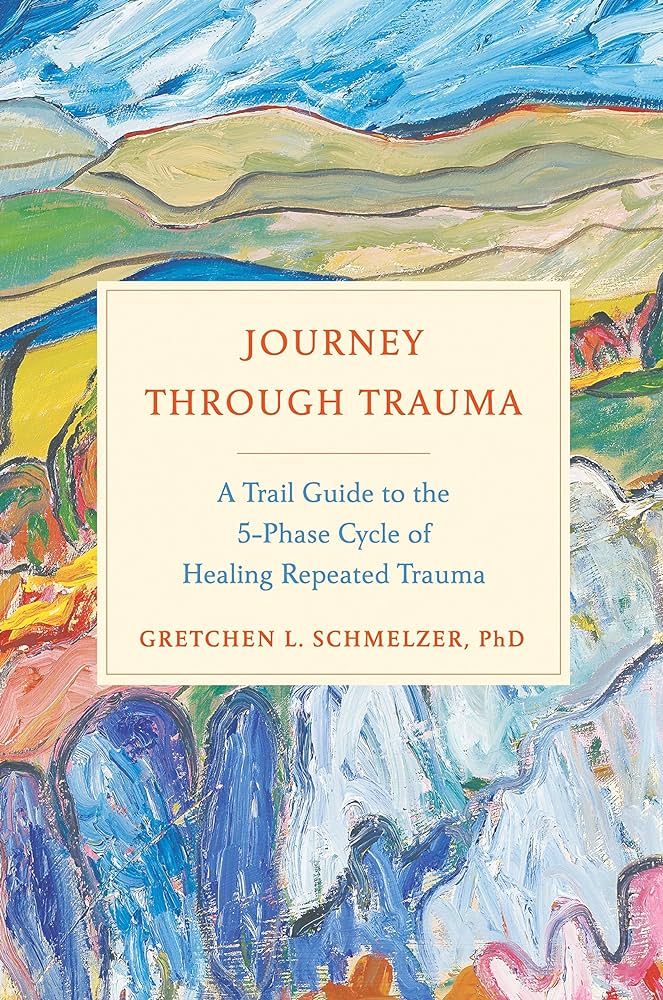

Gretchen Schmelzer watched too many people quit during treatment for trauma recovery. They found it too difficult or too frightening or just decided that for them it was too late. But as a therapist and trauma survivor herself, Dr. Schmelzer wants us to know that it is never too late to heal from trauma, whether it is the suffering caused within an abusive relationship or PTSD resulting from combat. Sometimes what feels like a big setback is actually an unexpected difficult step forward. So she wrote Journey Through Trauma specifically for survivors –to help them understand the terrain of the healing process and stay on the path. There are three basic principles that every trauma survivor should know: Healing is possible. It requires courage. And it cannot be done alone. Traumas that happen more than once–child abuse, sexual abuse, domestic violence, gang violence, even war–are all relational traumas. They happened inside a relationship and therefore must be healed inside a relationship, whether that relationship is with a therapist or within a group. Journey Through Trauma gives us a map to help guide us through that healing process, see where the hard parts show up, and persevere in the process of getting well. We learn the five phases that every survivor must negotiate along the way and come to understand that since the cycle of healing is not linear, circling back around to a previous stage does not mean defeat – it actually means progress as well as facing new challenges.
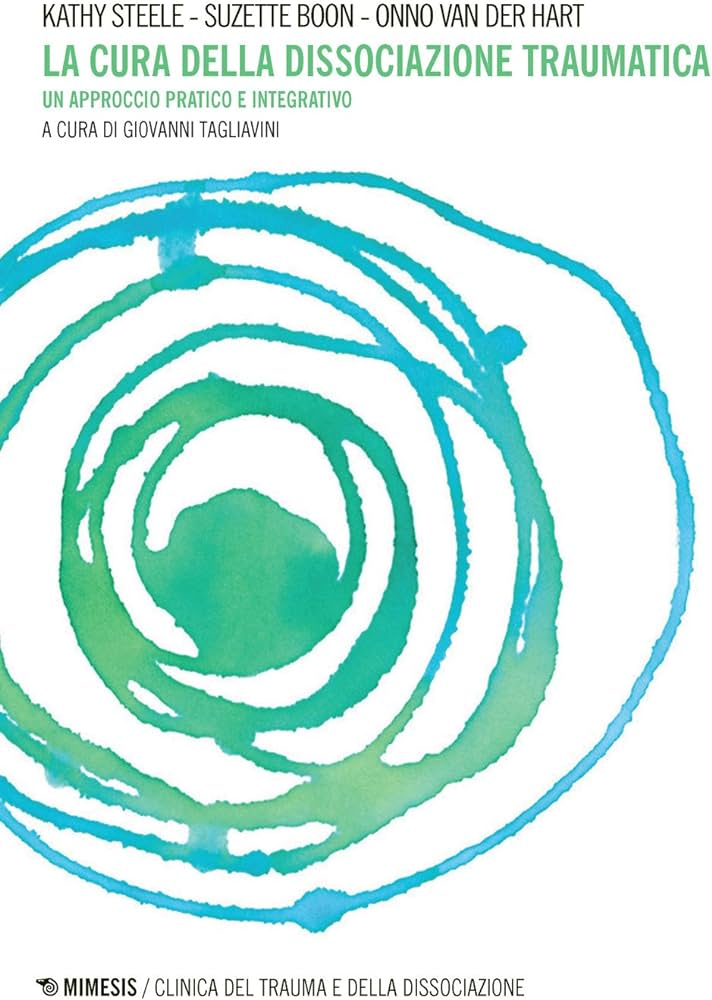

In tutto il mondo i terapeuti si pongono le stesse domande e affrontano le stesse sfide quando curano pazienti traumatizzati e gravemente dissociati. Questo libro nasce da migliaia di ore di terapia che tre grandi esperti del settore hanno vissuto con i pazienti. Gli autori offrono un’amplissima panoramica che spazia dalla neuropsicologia della dissociazione come disturbo di non-realizzazione e dalle fasi di valutazione, prognosi, formulazione del caso e pianificazione del trattamento, fino ad arrivare ai temi clinici più specifici. Le modalità relazionali di essere e stare col paziente sono la spina dorsale del trattamento e per questo motivo vengono approfondite in tutto illibro, mostrando interventi altamente pratici e solidi a livello teorico, descrivendo approcci innovativi ed empatici basati sulle ricerche più recenti riguardanti l’attaccamento e la psicologia evoluzionista.
